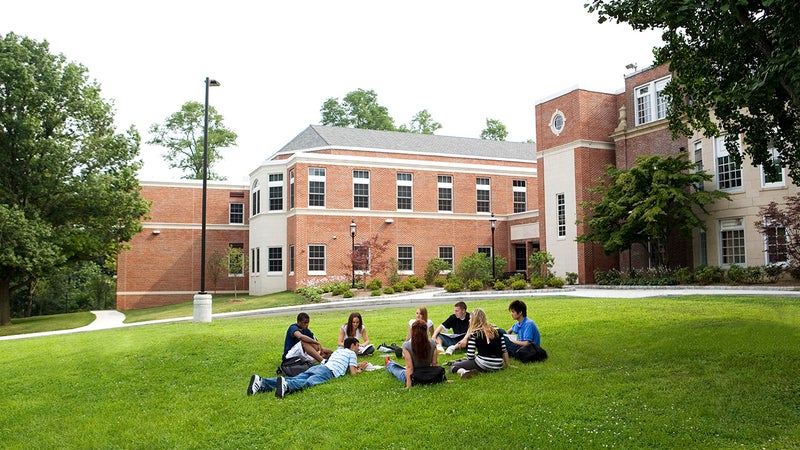What is a student credit card?

The Bankrate promise
At Bankrate we strive to help you make smarter financial decisions. While we adhere to strict , this post may contain references to products from our partners. Here's an explanation for . The content on this page is accurate as of the posting date; however, some of the offers mentioned may have expired. Terms apply to the offers listed on this page. Any opinions, analyses, reviews or recommendations expressed in this article are those of the author’s alone, and have not been reviewed, approved or otherwise endorsed by any card issuer.
Key takeaways
- Student credit cards have benefits geared toward those in college and are typically easier to qualify for.
- Depending on the card, you can earn cash back rewards and perks like waived late fees and purchase protection.
- Student cards may come with higher APRs and lower credit limits, so make sure to do thorough research (including knowing your credit score and chances for approval) before applying.
Whether you’re an undergraduate, graduate or non-traditional student, using a credit card that meets your needs is a great way to handle your money and build credit while juggling a student workload. Establishing a positive credit history early can also have a significant impact on future financial milestones — like applying for your first apartment, purchasing your first car or getting a mortgage.
Here’s what you need to know about student credit cards and how to best leverage them to your advantage.
What is a student credit card?
A student credit card is a revolving line of credit you can use to make purchases and then repay the balance, plus any accrued interest, at a later date. It works the same way any credit card works.
What sets a student credit card apart, however, are these main features:
- Ease of approval
- Student-based eligibility requirements
- Lower credit limits
- Student-centric purchase rewards
Students applying for their first credit card often have limited or no credit history. Student card issuers know this and hold student credit card applications to different approval criteria, which are typically less stringent than those for traditional non-student cards.
As long as you’re enrolled in an institution of higher education, you can enjoy the less strict qualification criteria of a student credit card. Furthermore, you don’t have to be a full-time student to apply for a student credit card, but you will need to meet certain eligibility requirements depending on the issuer.
While some student cards are bare bones when it comes to rewards, there are a few that offer rewards on student-centric purchases like streaming subscriptions, dining or Amazon spending.
Reasons to get a student credit card
Some credit card beginners make the mistake of viewing a credit card as access to “free money,” but in reality, credit cards are among the most expensive ways to borrow. So when you’re considering getting a student credit card, it’s important to go into it for the right reasons, namely:
- Building your credit history
- Earning rewards and minimizing interest charges
- Helping with emergencies
- Learning to use credit responsibly
Building credit history
There are 26 million Americans who have limited credit or no credit — also referred to as credit invisible, according to a 2021 FICO report. Of those 26 million, nearly 4 million are new to credit and average 23 years old.
Why is building credit so important? Because it tells your future lender how likely you are to repay the money you borrow from them. It also helps determine how much lenders will charge you to borrow money.
Having limited or no credit can make it harder or more expensive to reach milestones such as:
- Renting an apartment
- Getting a cellphone
- Buying a car
- Buying a home
- Paying the best rates for insurance
When you build your credit history early, it spares you the difficulties of navigating the world without credit.
Earning rewards
A variety of student cards give cash back on popular student spending categories like dining, entertainment and gas. Some cards offer added benefits like purchase protection or credit-building tools to help credit beginners.
For instance, the Capital One SavorOne Student Cash Rewards Credit Card offers 3 percent cash back on dining, entertainment, popular streaming services and at grocery stores (excluding superstores like Walmart and Target), plus cash back rewards on hotels and rental cars, Capital One Entertainment purchases and Uber and Uber Eats purchases. A student card like this offers huge rewards for nearly any category of spending on most young adults’ plates.
On top of rewards and eligibility requirements, many student credit cards don’t charge annual fees. Study-abroad hopefuls may also enjoy waived foreign transaction fees, but you should always check the card’s terms and conditions.
Covering emergencies
As you’re starting your journey into adulthood, unexpected events will arise. An emergency savings account should be your first line of defense, but if the emergency costs more than you have stashed away, you’ll need to rely on another form of payment. That’s where student credit cards come in handy.
Let’s say your car battery dies and won’t take a charge. You need to replace it so you can get to work and school, but there’s not enough in savings to cover a replacement. By paying for the repair with your student credit card, you can quickly solve the problem and repay the balance over time.
Learning to use credit responsibly
Student credit cards have noteworthy perks and drawbacks. If you use your student credit card responsibly, you will be on your way toward building good credit and establishing solid financial habits. Part of using credit responsibly is learning to pay your obligations on time. But while you’re still learning, you might slip up.
With student credit cards, even students with no credit scores may be approved. Some student cards take a more lenient stance on late payments by not charging a late fee on your first miss. The Discover it® Student Cash Back card, for example, waives your first late payment fee, but late fees go up to $41 thereafter.
Still, missing credit card payments regularly will have a negative impact on your credit score, no matter what. If you can’t pay the card in full, then be sure to pay the minimum required on or before the payment due date to avoid late fees or major hits to your credit score.
Risks of a student credit card
Student credit cards also have drawbacks to keep in mind.
High interest rates
Card issuers usually view students as high-risk borrowers, which often results in higher interest rates on student credit cards. Credit card APRs average more than 20 percent right now and student cards are often on the high end of that, so if you carry over a balance month to month interest charges will add up fairly quickly.
However, as long as you make on-time payments and pay off your balances in full each month, in most cases you can avoid paying interest charges on purchases completely.
Lower credit limits
On top of high interest rates, issuers usually grant lower credit limits with student credit cards. Once you are able to demonstrate your creditworthiness with a consistent, on-time payment history and responsible usage, your issuer may automatically increase your credit limit. Or you can contact your issuer and request a higher credit limit. But until then, you will typically be left with a low credit limit.
Potential to outgrow
Student credit cards are best suited for undergraduate, graduate or non-traditional students who are looking to build a credit history from the ground up and want rewards for student-focused spending.
If you are not a student but are still hoping to build or rebuild your credit, you may look into applying for a secured credit card or another card option that best fits your current credit score tier.
Student credit cards can get restrictive as you build up your credit history and become eligible for cards with better rewards and perks. Luckily, many issuers provide a path so you can upgrade your card once you’re no longer a student.
Applying for a student credit card
Once you’ve evaluated your financial situation and decided a student card is the right choice for you, it’s time to apply. Here are five steps to applying for a student credit card:
- Know your credit score. Your credit score is the key to knowing what cards you could be approved for. If you don’t yet have a credit score, there are still cards you can apply for.
- Go to the card’s issuer site and find the application. Once you’ve found the card that works best for you, set up any necessary accounts and locate the application for your card of choice.
- Apply for the card. Gather and input all necessary application information, such as your name, address and annual income. If you’re wondering what to enter for your annual income, consider things like pay from your part-time job, scholarships, grants and regular allowance money.
- Look out for an application decision. An application decision could be instant or it could take a few days. If you are denied, an issuer is legally required to send a letter detailing the reason.
- Make a payment plan. If approved, note the card’s payment due date to ensure you always pay on time and in full to avoid added interest charges. You will then receive the physical card in the mail.
Age requirements for a student credit card
By law, the minimum age to be a primary cardholder is 18, but there are additional proof-of-income requirements for applicants under the age of 21.
If you’re under the age of 21, credit card issuers will require you to show proof of income, but you can’t use household income like you can starting at age 21. If you’re at least 18 and you don’t have the income required to be approved for a credit card on your own, you will need to apply with a cosigner or consider a secured credit card.
The bottom line
A student credit card can be a great way to start building your credit early so you’ll have an easier time accomplishing life’s biggest milestones. Paying your credit card bill on time and in full should always be your first priority. Do your research and pick a card that best fits your unique financial needs.





